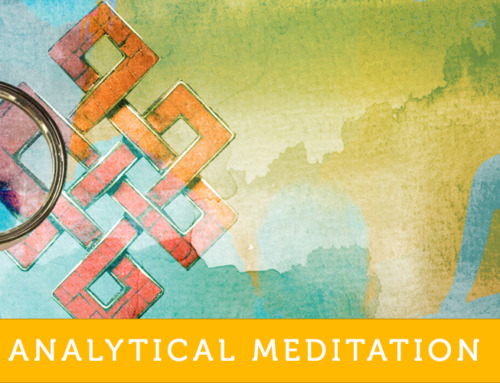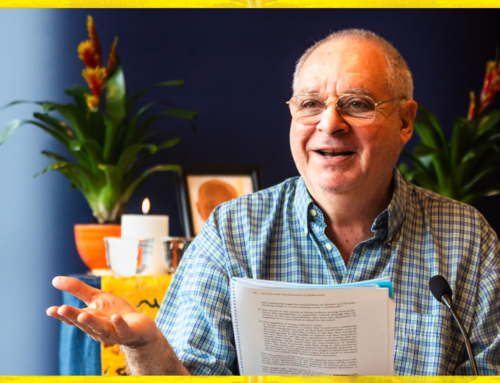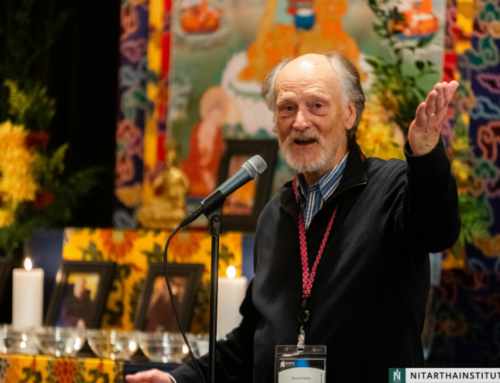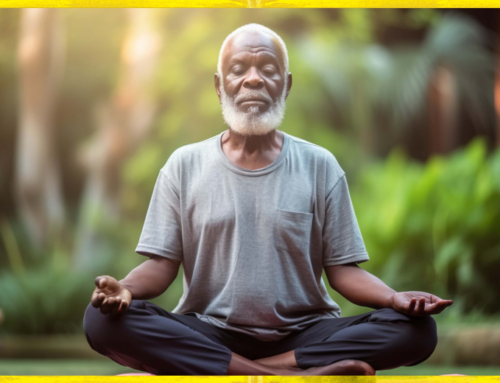Non-Thinking through Clear Thinking
It sometimes feels like study proliferates our thoughts, when what we really want is for the mind to be still. But our thoughts are a tool. We can use them to undermine our belief in solidity. In fact, Nitartha’s Clear Thinking course offers a method to arrive at non-thought, which is one aspect of the experience of meditation.
Dignaga and Dharmakirti analyzed language, words and clauses, and observed that among those the most elemental unit of expression is a word which is imbued with meaning. They noted that thoughts are language and concluded that language is the same as logical operations, and that the expression of thoughts in the form of words follows logical rules. That logic may not always be apparent, and could be flawed, but it is still logic.
In Clear Thinking, we learn how to begin to trick the ego by saying, “You would like to talk. A lot. Okay, we’ll do that.” But it won’t be the usual chatter. We will have a discussion with our ego based on reasoning, or logic. Don’t our worst tendencies and drives take over our reason? We see that a lot, in our lives and in society. But through the use of logic as presented in Clear Thinking, we learn to counteract ego’s impulses.
Ego follows the rules of logic because ego is nothing but thought, and thought is logic. The very make-up of ego is logic. The ego will listen to logic. If it does not believe in logic, then it does not believe in itself. The only way to impact ego-clinging is through its own make-up, that is, logic. You cannot deal with it through something extrinsic to its nature. Ego needs to be defeated by ego, it needs to overcome itself.
Clear Thinking provides tools to help redirect and transcend the ego-clinging mind. This is how we prepare for debate, we train the ego using one’s own innate wisdom, or prajna.
We continually label the world around us. We go through our day putting conceptual stickers on appearances. But the conceptual mind, the sense of self, does not stop there. Ego likes to move. It likes to steer things, most importantly by judging, by propounding views.
Then, instead of saying car, we say “ugly car” or “cool car”, or “it’s her car and I want to have it.” The ego projects values onto the labels. That’s the second step.
Ego often then creates a full-fledged version of that spin to justify its view. It’s not enough to assert that this is a cool car. Ego needs a reason for it. That’s how prejudices operate. This car is good because it’s German. This vaccine is bad because it’s Chinese. This person is dangerous or safe because of their skin color or religion.
In debate we would put the car, our value judgment that it is good and the reason for that judgment (because it’s German) into a logic statement. Then we examine it and test the statement. In this way, our prajna helps our ego to realize that its very core, which is thought, is based on faulty logic.
However, debate is not about prajna simply trying to overpower ego, or vice versa. Prajna needs to be skilled at how to approach ego. You can’t throw ego out overnight – that would be drastic. It’s more like a dialogue between two friends, where one is doing some foolish things, and the other is trying to help. There’s a lot of compassion involved in this relationship. We are parenting ego into egolessness. We are guiding the ego gradually through the journey. This skill involves loving kindness and compassion for oneself and our debate partner, which in itself depends on loosening the grip of ego-clinging.
In debate we do not tell the ego how things are or that it is mistaken. Instead, debate creates a situation where ego can learn the lesson for itself.

Nitartha Institute’s Clear Thinking course will be taught during the 2024 Summer Institute as part of Study Level 1, and is included in your Summer Institute tuition. Also enjoy Dzogchen Ponlop Rinpoche’s special talks on “Mahamudra Lineage Chit-Chat,” Mind and Its World I and II, and onsite enhancement activities at Lewis & Clark College in Portland. (Courses will also be livestreamed and recorded.)





